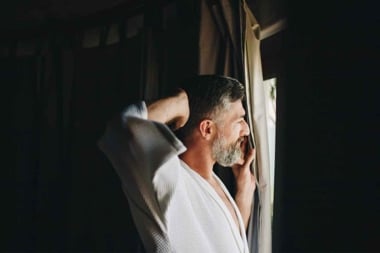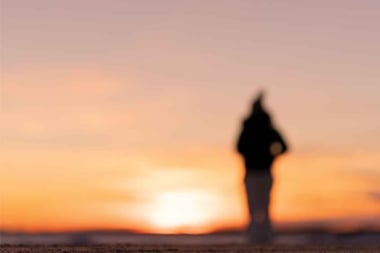
The quest for a long life is as old as humanity itself. While the elixir for eternal life remains elusive, in specific pockets around the world, humanity’s attempt to extend life seems to have been met with greater success. Enter the Blue Zones.
Pinpointed by National Geographic explorer Dan Buettner with a team of anthropologists, demographers, and epidemiologists, the Blue Zones are five regions of the world with some of the longest-living and healthiest populations. Despite geographical differences, several common lifestyle habits of their inhabitants contribute to more years of healthy living than the norm. It’s more than just winning the genetic lottery.
Where are the Blue Zones?
- Okinawa, Japan
- Sardinia, Italy
- Nicoya, Costa Rica
- Ikaria, Greece
- Loma Linda, California
Blue Zone longevity tenets
Here are the Blue Zone tenets that research suggests back up their longevity promises and how to build them into your lifestyle for a better chance to live long and prosper.
Go bigger on plants
A common thread among Blue Zones is a largely plant-based diet. Legumes, whole grains, seasonal fruits, and garden-fresh vegetables and herbs are the cornerstones of these diets. Healthy plant-based foods are rich in micronutrients, fibre, and phytonutrients that help lower the risk for several deadly diseases as does a reduced calorie density that contributes to the maintenance of lower body weight throughout life.
A 2024 study published in PLOS One found, based on data from 49 studies, that plant-based diets are significantly associated with a lower risk of mortality from cardiovascular disease and cancer.
Most healthy older individuals living in Blue Zones eat meat and high-fat dairy far less often and in smaller portions than is typical in standard North American diets. Animal-based foods like yogurt and fish (think goat dairy in Sardinia and fish on Okinawa) provide valuable nutrients that contribute to longevity.
Get up and move, often
Physical activity in Blue Zones involves a consistent flow of natural movements, including gardening, daily tai chi, and shepherding livestock in the hills. Sit less, move more is a good Blue Zone motto.
Researchers reported in the British Journal of Sports Medicine that, for each additional 30 minutes of sedentary time on a typical day, men were 17 percent more likely to die during a five-year study period. Every extra half hour of light activity, such as walking, was associated with 17 percent lower odds of earlier death. Other research shows that “exercise snacks,” short bursts of physical activity during a day, have positive health benefits.
Move more, sit less
Make time for exercise in your daily routines, from evening walks or runs in the park to cycling to work or weight training. Frequent exercise and less sedentary behaviour are critical for controlling body weight, regulating blood sugar, improving blood circulation, and lowering feelings of stress, all key factors in boosting lifespan.
Gather a crowd
Buettner and colleagues identified social interactions as a major player in Blue Zone longevity. The Seventh-day Adventists in Loma Linda live in tightknit communities, while Okinawans are supported by their moai, a social circle that provides support during life stressors and reinforces shared healthy behaviours. These communities focus more on face-to-face time than on Instagram likes.
An investigation in the Proceedings of the National Academy of Sciences found having more social relationships was associated with a lower risk of testing poorly for certain physical health measures, including blood pressure, waist circumference, and inflammation, both early and later in life. Conversely, subjects with fewer social connections and more social isolation were at increased risk for health-hampering inflammation and hypertension.
Humans are social creatures genetically hardwired to thrive on social interaction; without it, the stress can affect our mental and physical health. We should create an environment that encourages daily socializing: schedule family meals, join a sport that involves group play, or volunteer―all good ways to decrease alone time. The key is to surround yourself with like-minded people; healthy lifestyle habits are contagious.
Come together
Increasingly, scientific research supports the anecdotal evidence gleaned from the Blue Zone longevity pockets. But when we apply the healthy Blue Zone habits to our own lives, we need to remember that these habits are part of an integrated whole, a way of living. In other words, we need positive patterns of various lifestyle behaviours that are maintained over time. A workout at the gym won’t make up for endless hours of sitting, eating poorly, and living life in isolation.
Find your reason for being
Nicoyans call it plan de vida, and Okinawans refer to it as ikigai, essentially translating as “a reason to live.” Starting each day with a sense of purpose and fulfillment with the ability to articulate what they contribute to their communities seems to help drive these elders toward a longer life, or at the very least keep them feeling positive, upbeat, and happy. Many outcomes of purposeful living, including reductions in stress and depression and an increase in social activity, can drive healthfulness and longevity.
A study published in the Journal of the American Medical Association used a questionnaire to rank the life purpose of about 7,000 adults over age 50. Follow-up five years later found subjects with the lowest life-purpose scores were about twice as likely to have died than those with the highest scores. Low life purpose was also associated with greater mortality from heart disease.
A sense of usefulness can come from something as simple as enjoying a hobby, actively volunteering time to worthy causes, or a meaningful career. Crafting a personal mission statement can help guide the way.
Colour me healthy
The Blue Zones are named for the blue circles that Michel Poulain, a Belgian demographer, scribbled on a map to identify villages in Sardinia where he found a greater than normal number of centenarians residing.
Sleep tight
Blue Zone denizens typically get 8 to 10 hours of shuteye each night; long-living Ikarians are known for cherishing their afternoon naps. In contrast, many North Americans are chronically sleep deficient. Poor sleep habits don’t just impact mental functioning: they can also chip away at lifespan.
A large research review in the Journal of the American Heart Association found when people typically get less than 7 hours of sleep nightly, they’re at higher risk for cardiovascular disease and early mortality. It’s not yet known what impact sleep has on longevity in comparison to nutrition and physical activity.
If you’re moving through your day in a zombie-like state, it might be time to practice better sleep hygiene. Establish a personalized bedtime routine, including designating an earlier sleep time, refraining from digital devices at least an hour before hitting the hay, and removing light pollution from the bedroom.
Live outside
Blue Zone golden-agers typically spend ample time in the great outdoors. Sure, they live in climates more conducive to this, but most desk-bound North Americans could do a lot worse than to embrace Mother Nature more often. According to a 2019 study published in the journal Nature Scientific Reports, spending at least 3 hours a week in a natural environment can greatly enhance a person’s overall sense of well-being. And, yes, a food garden counts as a natural environment.
Golden rules of eating for longevity
Using the Blue Zones as inspiration, here is how to eat your way to a ripe old age:
- Focus on serving plant-forward dishes full of vegetables, plant-based proteins, and unsaturated oils.
- Eat more locally grown foods.
- Front-load your calories by eating more of your daily nourishment earlier in the day.
- Drink fewer of your calories from sweetened sodas and beverages.
- Eat more mindfully.
- Eat alone less often.
- When possible, grow more of your own food.
- Limit intake of ultra-processed foods.
This article was originally published in the October 2024 issue of alive magazine.





